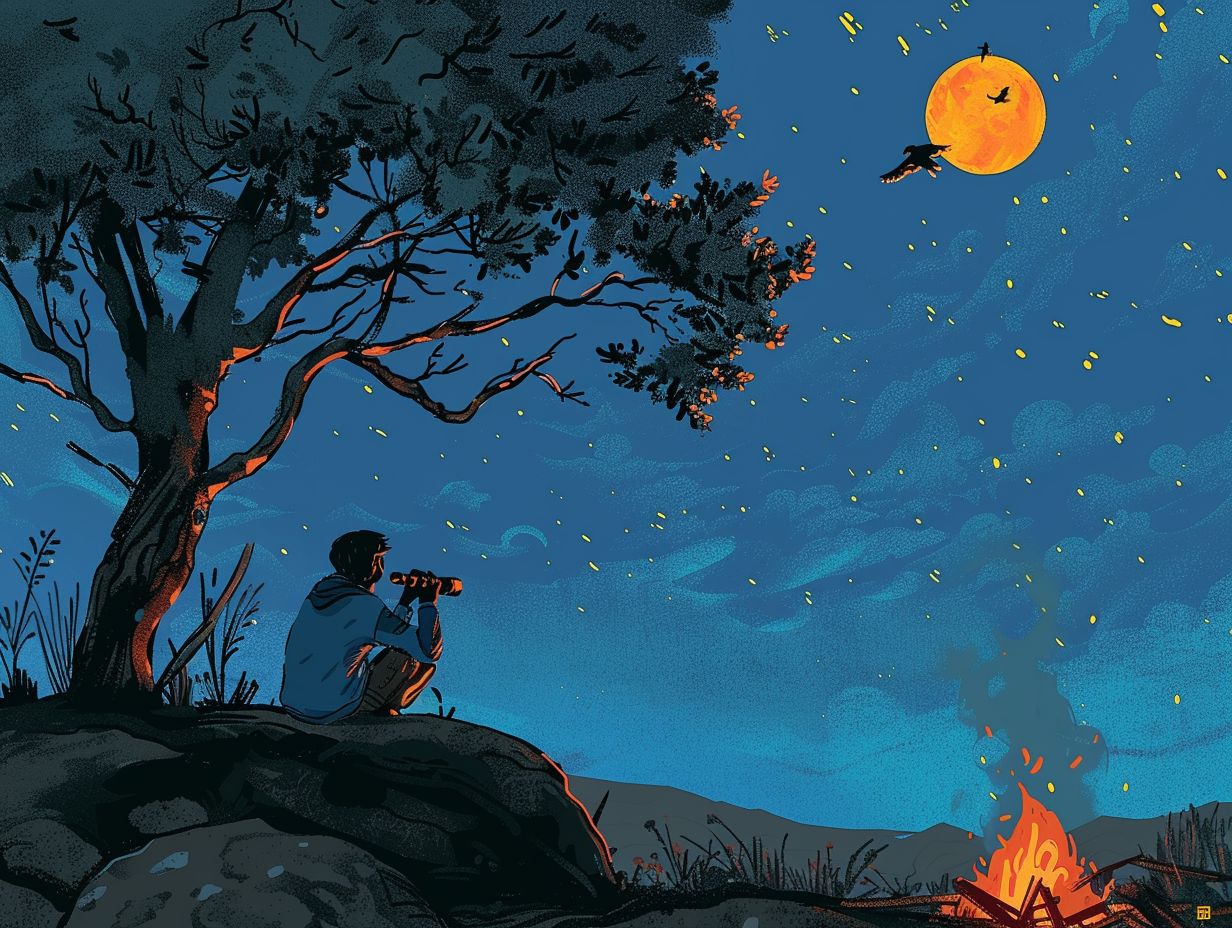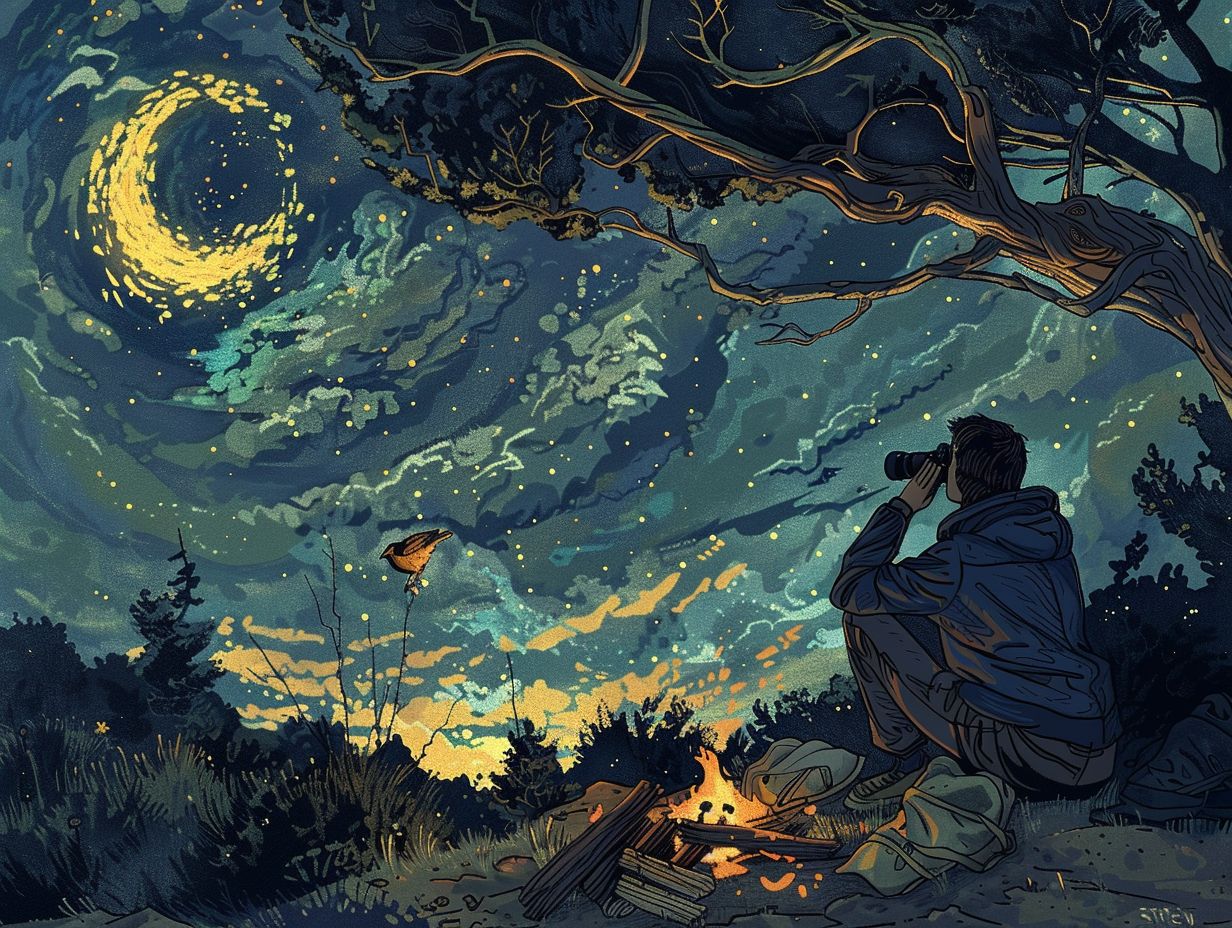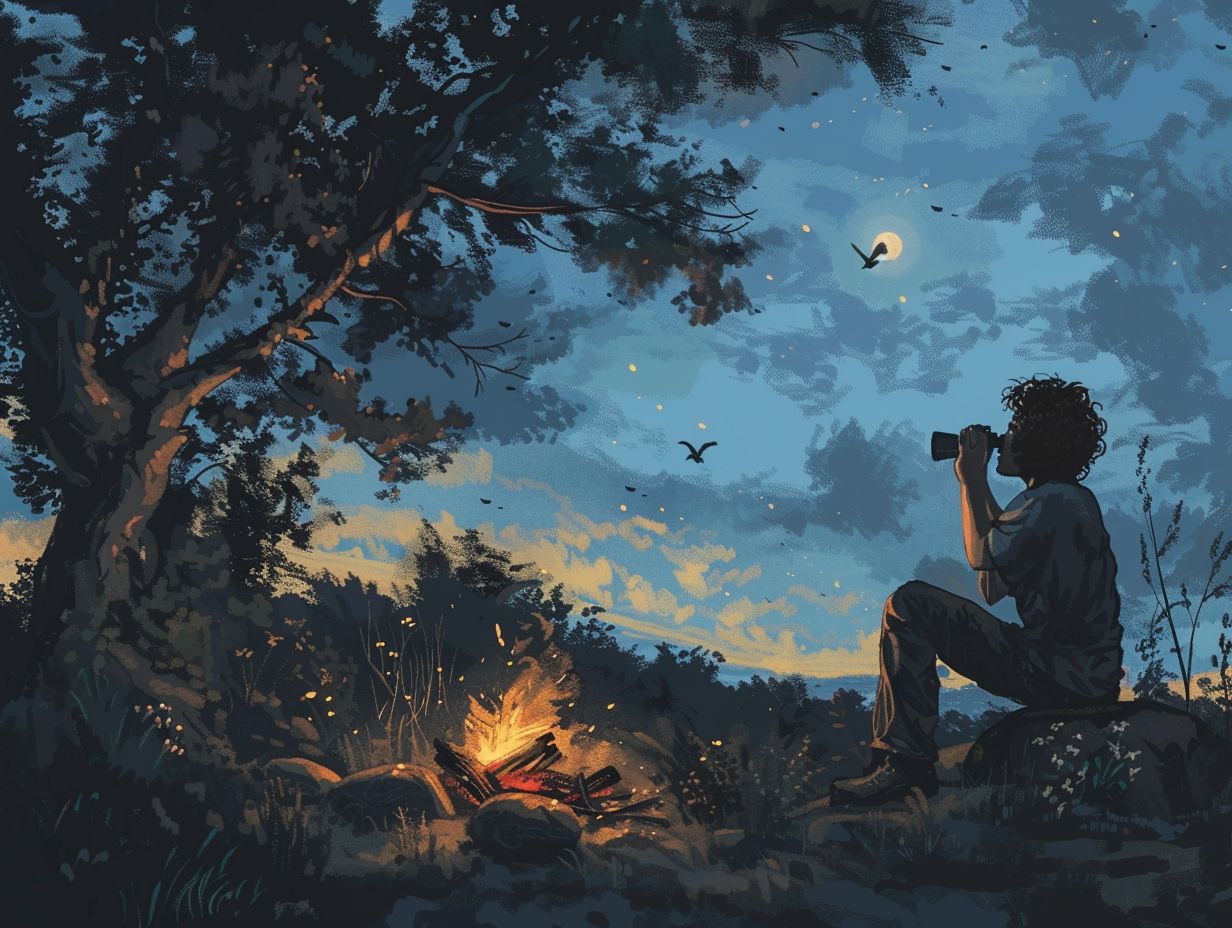If you are a nature enthusiast seeking to elevate your camping experience, incorporating bird watching into your outdoor adventures can offer a heightened sense of enjoyment and a deeper connection with the natural world.
This guide will outline the necessary equipment for bird watching during camping excursions, strategies for identifying prevalent bird species in camping areas, optimal times and locations for bird watching, proper etiquette for observing birds, and methods for capturing striking photographs of these magnificent creatures.
Prepare to delve into the realm of bird watching while camping, enriching your outdoor experiences with the wonders of avian observation.
Key Takeaways:

- Combining bird watching and camping offers a unique and immersive experience in nature.
- Essential gear such as binoculars and field guides are necessary for successful bird watching while camping.
- The best times and locations for bird watching while camping are early morning and diverse environments with water sources.
Why Combine Bird Watching and Camping?
Combining bird watching and camping provides you with a unique opportunity to immerse yourself in nature, observe diverse wildlife, and experience the tranquil beauty of the outdoors. This combination allows you to enjoy the chirping melodies of various bird species while being surrounded by the serene environment of campsites or national parks.
Witness the delicate dance of nature as birds soar overhead and nest in the lush foliage surrounding the campgrounds. Camping amidst wildlife habitats enables you to establish a deep connection with the environment, bringing a sense of peace and awe.
The synergy between bird watching and camping fosters an appreciation for the intricate ecosystems that sustain these majestic creatures, creating a harmonious space where humans and wildlife coexist in harmony.
Essential Gear for Bird Watching While Camping
When you set out on a bird-watching expedition during camping trips, it is important to bring along the necessary equipment. Ensure you pack high-quality binoculars, detailed field guides, and bird feeders. These tools are crucial for enthusiasts who are keen to observe and identify different bird species within the natural settings of campsites.
Binoculars, Field Guides, and More
Binoculars and field guides are your primary tools for spotting and identifying different bird species in their natural habitats. These essential items enrich your birdwatching experience by offering clear visuals and detailed information about the birds you encounter during camping excursions.
Premium binoculars tailored for birding are typically equipped with high-quality optics that deliver sharp, magnified views of distant birds with exceptional light transmission, which is essential for low-light conditions often encountered during early morning or dusk birdwatching sessions.
Alongside binoculars, comprehensive field guides play a crucial role in identifying species by providing detailed descriptions, range maps, and insights into bird behaviour to accurately classify the diverse array of bird species found in various habitats.
Additional essential gear such as a durable rucksack, comfortable walking boots, and a reliable birding journal further enhance your overall birding experience. These items ensure comfort, mobility, and the ability to record important observations, allowing you to deepen your understanding of bird behaviour.
Identifying Common Birds in Camping Areas

During your camping holidays, you have the opportunity to identify and capture images of common birds that are native to specific locations and habitats. With your sharp eye and a camera in hand, you can document the diverse variety of bird species present in different camping areas, creating lasting memories of your sightings.
Species to Look Out For
During your camping trips, keep an eye out for a diverse range of bird species that frequent the area, attracting park visitors and falling under various species categories.
You may encounter the vibrant American Robin, known for its melodic songs and distinctive red breast, or the majestic Bald Eagle soaring high above. Smaller species such as the agile Chickadee and the colourful Blue Jay also grace these natural habitats.
Each species plays a unique role in the ecosystem, offering you a glimpse into the intricacies of wildlife interactions.
Observing squirrels scurrying through the trees or playfully foraging can further enrich your camping experience, creating memorable moments in the great outdoors. These wildlife sightings add an extra dimension to your outdoor adventures, enhancing your overall enjoyment of the natural surroundings.
Best Times and Locations for Bird Watching While Camping
Selecting the most suitable times and locations for bird watching whilst on camping expeditions is essential for maximising your sightings and overall experience. Early morning hours at dawn near water sources frequently offer exceptional birding opportunities, and participating in birding activities at specific times and locations increases the likelihood of encountering a variety of bird species.
Optimal Times of Day and Ideal Environments
The optimal times of day for bird watching whilst camping are usually during dawn and dusk when bird activity is at its peak. Ideal environments such as wooded areas, wetlands, and open fields provide diverse habitats for bird species, offering birdwatchers a rich and fulfilling bird watching experience.
During these times, birds are often most active, creating a symphony of songs and calls that fill the air. In wooded spots, you may catch glimpses of elusive forest dwellers like owls or woodpeckers, whilst wetlands attract water birds like herons and ducks.
Open fields provide excellent vantage points to observe birds of prey soaring high above. Each habitat offers a unique glimpse into the diverse world of bird life, making every sighting an exciting discovery for wildlife enthusiasts.
Etiquette for Bird Watching While Camping

When bird watching during camping trips, it is crucial to adhere to proper etiquette to show respect for the environment, other bird enthusiasts, and the wildlife in the vicinity. Participating in activities that support bird conservation, minimising disruptions, and following ethical guidelines can improve the birding experience and play a role in conserving natural habitats.
Respecting the Birds and Their Habitat
When bird watching during camping adventures, it is crucial to respect the birds and their natural habitat. You should ensure the responsible use of feeders, seeds, and other attractants to minimise disruptions to bird behaviour and promote a harmonious coexistence between birders and the diverse wildlife in the environment.
Being mindful of the impact of your presence on the delicate ecosystems that birds rely on for survival allows you to contribute to the conservation of their habitats.
Following ethical birding guidelines, such as avoiding overcrowding feeding areas and refraining from excessive use of bird feeders, is essential for maintaining the well-being of bird populations and preventing negative impacts on their migration patterns and reproductive cycles.
Observing birds in their natural settings without disturbing their behaviours enables you to admire the beauty and elegance of these captivating creatures.
Tips for Capturing Photos of Birds While Camping
To capture stunning photos of birds during your camping trips, you will need to employ the correct techniques, utilise a dependable camera, and consider using binoculars to spot elusive species.
Through a comprehensive understanding of effective photography methods and the use of high-quality equipment such as cameras and seeds as bait, birders can immortalise their bird-watching experiences by capturing captivating images.
Techniques for Getting the Perfect Shot
Mastering techniques for capturing the perfect shot of birds whilst camping involves understanding camera settings, bird behaviour, and utilising feeders or birding apps for assistance. When setting up your camera, it’s crucial to adjust the aperture and shutter speed to account for different lighting conditions and the speed of bird movement.
Taking note of bird behaviour cues, such as feeding patterns or flight paths, can help you anticipate photo opportunities. Utilising bird feeders strategically can attract a variety of bird species to your camping site, providing ample subjects for photography. Birding apps can also aid you in identifying bird species and their habitats, allowing you to target specific birds based on your preferences and their behaviour.
Frequently Asked Questions

What is bird watching while camping?
Bird watching while camping is the activity of observing and identifying different bird species in their natural habitat while camping outdoors. It combines the enjoyment of camping with the hobby of bird watching.
Why should I try bird watching while camping?
Bird watching while camping is a great way to connect with nature and learn more about different bird species. It also adds an extra element of adventure to your camping trip and allows you to explore new areas and ecosystems.
What items do I need for bird watching while camping?
You will need a pair of binoculars, a field guide or bird identification app, a notebook, and a pen to record your sightings. It is also helpful to have a birding journal or logbook to keep track of your observations.
Where is the best place to go bird watching while camping?
Any natural area with diverse bird populations is a great place to go bird watching while camping. National parks, wildlife refuges, and campgrounds near lakes, rivers, or forests are all popular choices.
What is the best time of day for bird watching while camping?
Many birds are most active during the early morning or late afternoon, so these times are ideal for bird watching while camping. However, different species have different habits and may be active at other times of the day as well.
Can I take pictures while bird watching while camping?
Yes, you can take pictures of the birds you see while camping. However, it is important to respect the birds’ space and not disturb them while taking photos. Be sure to also follow any photography guidelines or restrictions in the camping area.



